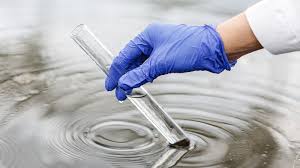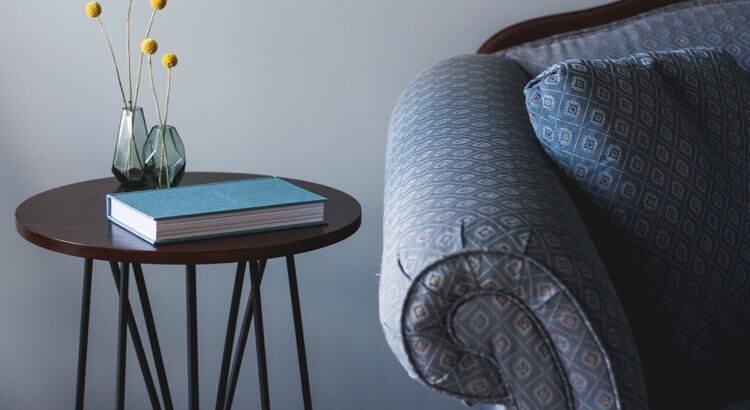Water Testing Guide
Did you know that 80-85% of errors in testing are a result of user error?
These issues stem from improper sample handling and poor testing technique. Our 10 page guide goes over the key fundamentals to give your team the foundation they need for success. Topics include:
Proper sample collection
Preparing your sample for testing
7 key steps to effective testing
How to accurately test water and build a solid foundation for an effective water treatment program.
The first (and very crucial step) to accurately test water, is the collection of an accurate sample. This means having the proper sample size, but also making sure your sample is representative of your whole system. By ignoring this most basic of principles, your test results can be skewed from the beginning causing you to generate erroneous results. To accurately test water there are three keys needed for an effective program.
An issue in one area can cause issues for your entire testing program; however, proper testing begins with the operator.
Most of the time, when an error occurs, it is because of user error and improper water sample collection methods. Improper handling can consume certain chemicals or introduce contaminants which affect tests and your response to the result. An important key to a representative sample, is flushing the sample line before you take your sample. This will clear out impurities or chemical concentrations at the sample point. This is why proper training and carefully following water quality testing procedures are so important.
This industrial water testing guide will answer the question of how to collect an accurate water sample and also give you and your team several key tips for water testing to ensure you are getting accurate results and making good treatment decisions. This guide will help you master the fundamentals and understand water testing best practices, so you can build a solid foundation
Topics covered include:
How to collect an accurate water sample
Preparing your sample
Proper lighting
Clean equipment
Sample accuracy
Proper technique

Drinking Water Help Guides
Acetone in Drinking Water?
Acetone has a pungent to fruity odor and it tends to be clear and colorless. The “odor” threshold for acetone in air is when it is 13 to 20 ppm and water when the level is 20 ppm. A concentrated fluid of acetone is highly volatile and flammable and acetone can be found in paints, lacquers, solvents, varnishes, cements/glues, and cleaners. Acetone is highly water soluble and can leach readily into the groundwater.
In addition to anthropogenic sources, i.e., man-made, acetone is created during the natural living and growing processes of plants and animals and levels of acetone are typically higher during a low carbohydrate diet, exercising vigorously, have poorly managed diabetes, or eating a high fat diet.
Absorption/Metabolism
Acetone is quickly absorbed by ingestion, inhalation, and dermal exposure. In two experiments with humans, inhalation absorption was in the 70 to 80 percent range. There is no data for the other routes. Absorbed acetone is almost entirely eliminated from the body within a day after exposure.
Short-Term (acute) Effects
Mild nervous system effects that abated soon after exposure ceased were seen in humans exposed to concentrations of acetone of 500 ppm in air and greater. Symptoms included irritation of the eyes and respiratory system, mood swings, and nausea. Accidental poisonings report similar nervous system effects of sluggishness and drowsiness that were not long lasting.
Only one animal study could be located, which investigated the effects of acetone exposure by ingestion. Rats were given drinking water containing acetone at a concentration of 25,000 ppm for 18 weeks. The only effect observed in the rats was weight loss, which may be attributed to decreased food consumption.
Water quality
Water quality refers to the chemical, physical, biological, and radiological characteristics of water. It is a measure of the condition of water relative to the requirements of one or more biotic species, or to any human need or purpose. It is most frequently used by reference to a set of standards against which compliance, generally achieved through treatment of the water, can be assessed. The most common standards used to assess water quality relate to health of ecosystems, safety of human contact, and drinking water. Water quality has a huge impact on water supply and oftentimes determines supply options
In the setting of standards, agencies make political and technical/scientific decisions based on how the water will be used.[4] In the case of natural water bodies, they also make some reasonable estimate of pristine conditions. Natural water bodies will vary in response to environmental conditions. Environmental scientists work to understand how these systems function, which in turn helps to identify the sources and fates of contaminants. Environmental lawyers and policymakers work to define legislation with the intention that water is maintained at an appropriate quality for its identified use.
The vast majority of surface water on the Earth is neither potable nor toxic. This remains true when seawater in the oceans (which is too salty to drink) is not counted. Another general perception of water quality is that of a simple property that tells whether water is polluted or not. In fact, water quality is a complex subject, in part because water is a complex medium intrinsically tied to the ecology of the Earth. Industrial and commercial activities (e.g. manufacturing, mining, construction, transport) are a major cause of water pollution as are runoff from agricultural areas, urban runoff and discharge of treated and untreated sewage.
Contaminants that may be in untreated water include microorganisms such as viruses, protozoa and bacteria; inorganic contaminants such as salts and metals; organic chemical contaminants from industrial processes and petroleum use; pesticides and herbicides; and radioactive contaminants. Water quality depends on the local geology and ecosystem, as well as human uses such as sewage dispersion, industrial pollution, use of water bodies as a heat sink, and overuse (which may lower the level of the water)
In urbanized areas around the world, water purification technology is used in municipal water systems to remove contaminants from the source water (surface water or groundwater) before it is distributed to homes, businesses, schools and other recipients. Water drawn directly from a stream, lake, or aquifer and that has no treatment will be of uncertain quality.

Water Quality Testing
It contains background information, lesson ideas, procedures, data collection and reporting forms, suggestions for interpreting the results and extension activities.
Parents, teachers, students and not-for-profit environmental educators are welcome to download the Water Quality Testing Manual free of charge. Please note that this program tests the environmental quality of water bodies, not the potability of drinking water.
Teachers in MWRA communities may borrow a Water Quality Testing Kit from MWRA. The kit contains equipment for testing temperature, pH, Dissolved Oxygen, Biochemical Oxygen Demand, Nitrates, Total Dissolved Solids and Salinity, Turbidity
In order to borrow a Water Quality Testing Kit, teachers must attend a full-day workshop. If you would like more information about the kit or the workshop
HEALTH AND ENVIRONMENTAL TESTING LABORATORY
This Guide is intended to summarize the State Health and Environmental Testing Laboratory’s ability to provide analytical support for the most recent EPA Safe Drinking Water Act (SDWA) requirements. The SDWA has undergone at least 8 major rule changes for analytical testing since its inception in 1975. Phase II and Phase V regulations increase the number of parameters monitored from 35 to 84 (including regulated and unregulated parameters) and significantly increase the technical complexity of the analytical procedures and instrumentation.
Currently the State of Maine HETL is not certified for Asbestos and Diquat. The State of Maine has been granted Waivers for Glyphosate, Dioxin, EDB, and DBCP. Other tests are available and may be listed in other testing guides: Private drinking water testing, Environmental, or special requests. Prices are the result of regulatory administrative procedures, either from individual price determination, or from the application of the approved regulated hourly rates.
The SEMI-VOLATILES ORGANIC SCREEN test uses a solid phase extraction technique to extract higher boiling compounds from the water sample. This is an EPA GC/MS method 525.2.Current analytes include: Hexachlorobenzene, Hexachlorocyclopentadiene, Benzo(a)pyrene, Di(2-ethylhexyl)adipate, Di(2-ethylhexyl)phthalate, Alachlor, Endrin, Lindane, Simazine, Aldrin, Heptachlor, Heptachlor Epoxide, Methoxychlor, Atrazine, and Dieldrin.
This test is performed according to Safe Drinking Water Act criteria for total TRIHALOMETHANES. Trihalomethanes result from chlorination of water.The four chlorination byproducts: chloroform, bromodichloromethane, chlorodibromomethane, and bromoform are tested by EPA method 524.2.
HERBICIDE SCREEN – A general screening method for the detection of the chlorinated acid herbicides (2,4-D) and residues of Dalapon , Dinoseb (DNBP), DICAMBA and PENTACHLOROPHENOL with EPA Method: 515.2




